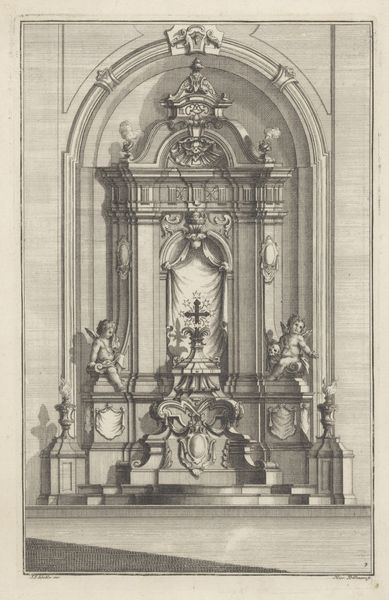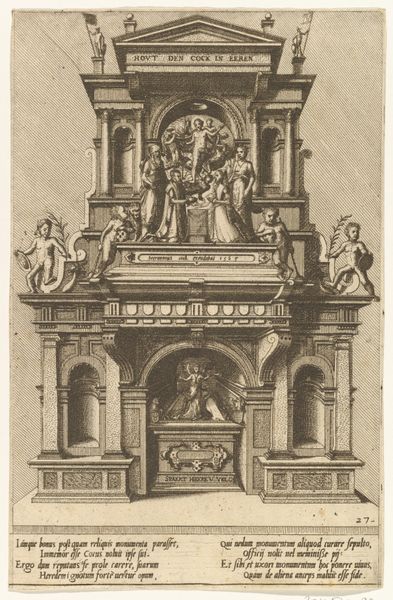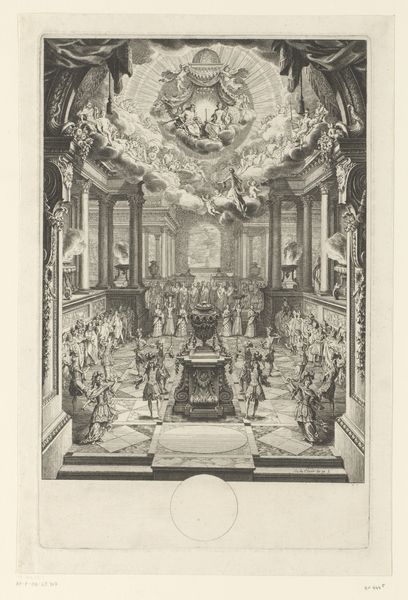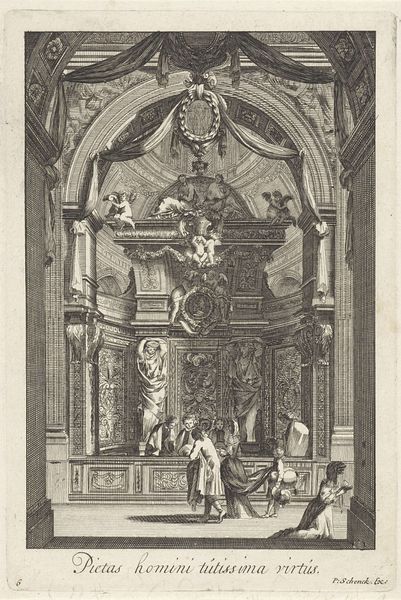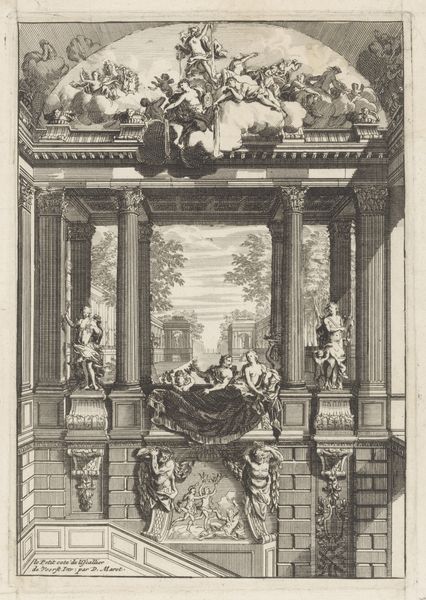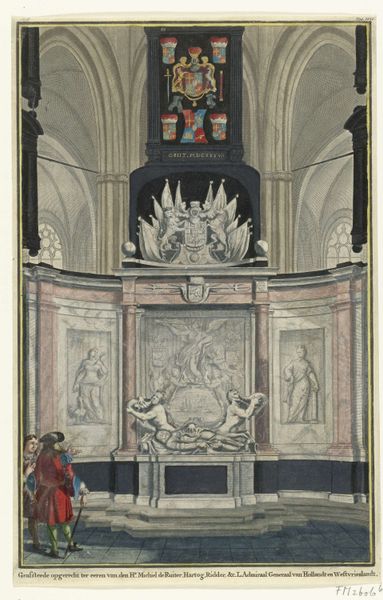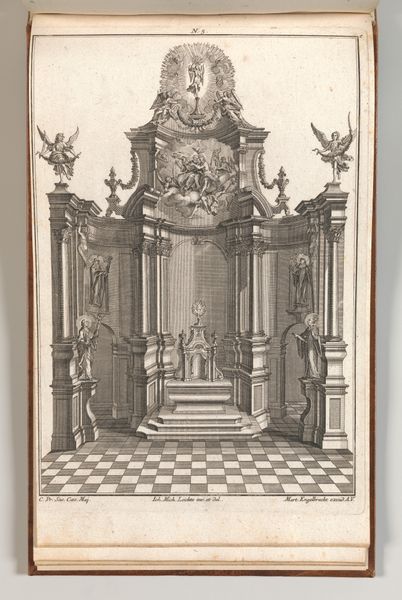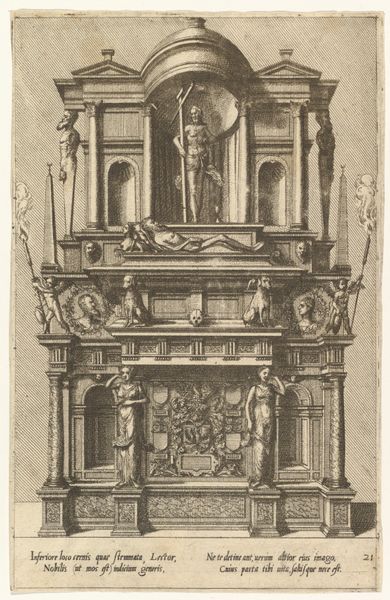
Praalgraf van Michiel de Ruyter in de Nieuwe Kerk te Amsterdam 1749 - 1770
0:00
0:00
josephmulder
Rijksmuseum
engraving, architecture
#
baroque
#
old engraving style
#
geometric
#
line
#
history-painting
#
engraving
#
architecture
Dimensions: height 290 mm, width 185 mm
Copyright: Rijks Museum: Open Domain
Curator: Here we have Joseph Mulder’s engraving, created between 1749 and 1770, depicting the Tomb of Michiel de Ruyter in Amsterdam’s Nieuwe Kerk. What are your first thoughts on this rendering? Editor: Stark and imposing, I’d say. The sheer linearity of the engraving medium really emphasizes the monumentality of the tomb itself and its location, especially with the surrounding church architecture adding a definite verticality. Curator: Absolutely. It's essential to remember de Ruyter's significant role as a celebrated admiral in Dutch history. His tomb was designed by the sculptor Rombout Verhulst after his death in 1676, so this engraving made decades later functions as a record and dissemination of national pride. Editor: Yes, I'd say the medium and its replication allow it to take on this function effectively. Consider how Mulder's rendering leverages line to capture the ornate details; the geometric precision, for instance, reinforces the themes of order, civic pride, and memorialization. Curator: What’s interesting is observing how Baroque ideals translate through engraving. Look at the dynamism—the draped figures, the complex layers of the architectural framework... there's still a sense of dramatic staging, even without color. Editor: Though constrained, Mulder extracts considerable depth and form, relying on carefully constructed lines to generate contrasting zones and suggest the illusion of three-dimensionality, while creating visual texture within its architectural depictions. Curator: And those heraldic elements—repeated emblems signaling de Ruyter's status—those reinforce the social hierarchy of the era, while reminding viewers of Dutch naval power at the time. The image thus operates on different symbolic registers, wouldn’t you agree? Editor: Undeniably so. What perhaps attracts my eye most is its ability to combine various representational facets: an event, a cultural emblem, and an historical moment. Curator: Well said. The enduring popularity of these types of engravings underscores the intersection between artistic technique, Baroque style, and the role of public memory in 18th-century Dutch society. Editor: A fitting epitaph for a national hero, recorded in lines for posterity.
Comments
No comments
Be the first to comment and join the conversation on the ultimate creative platform.
